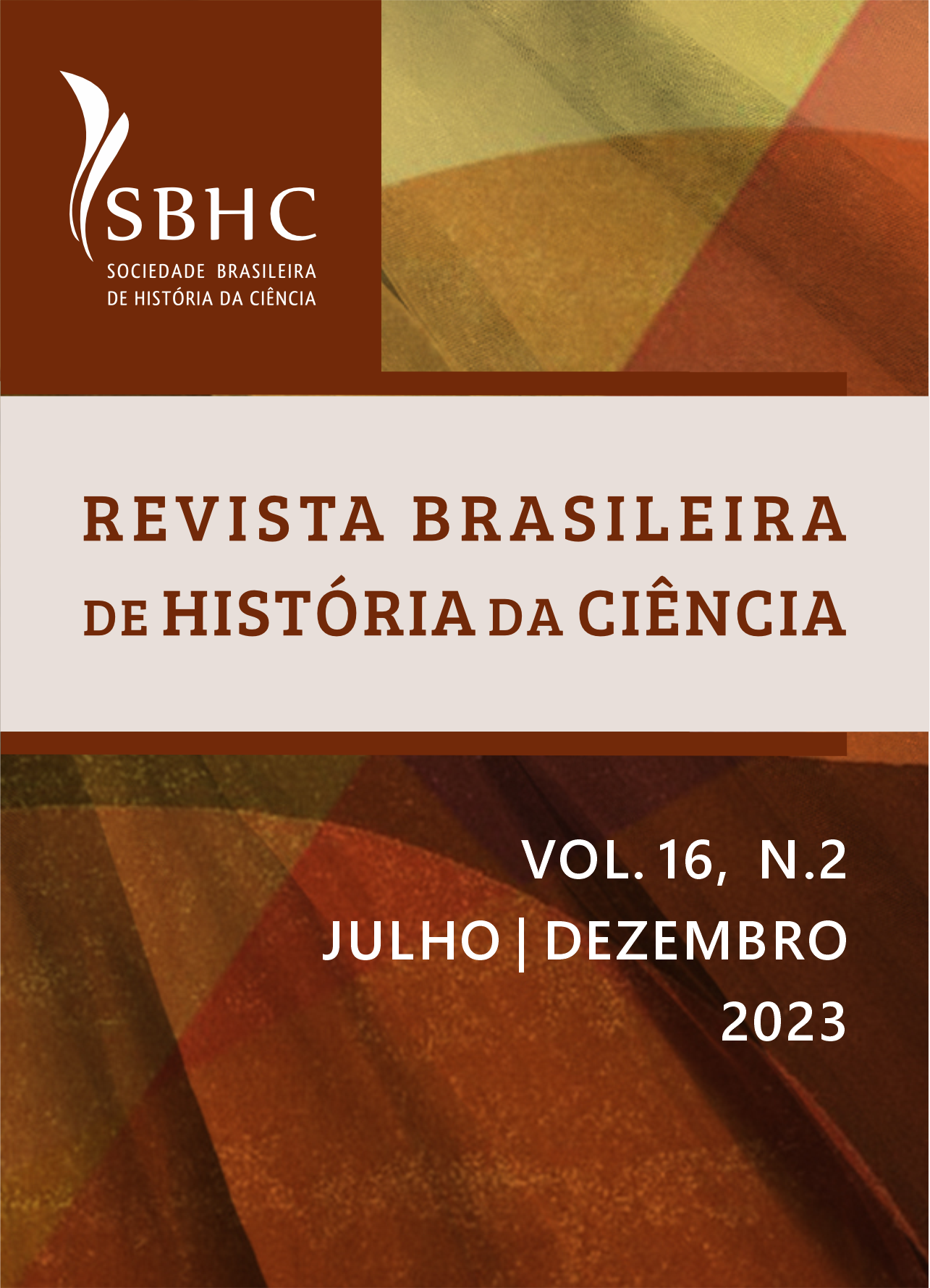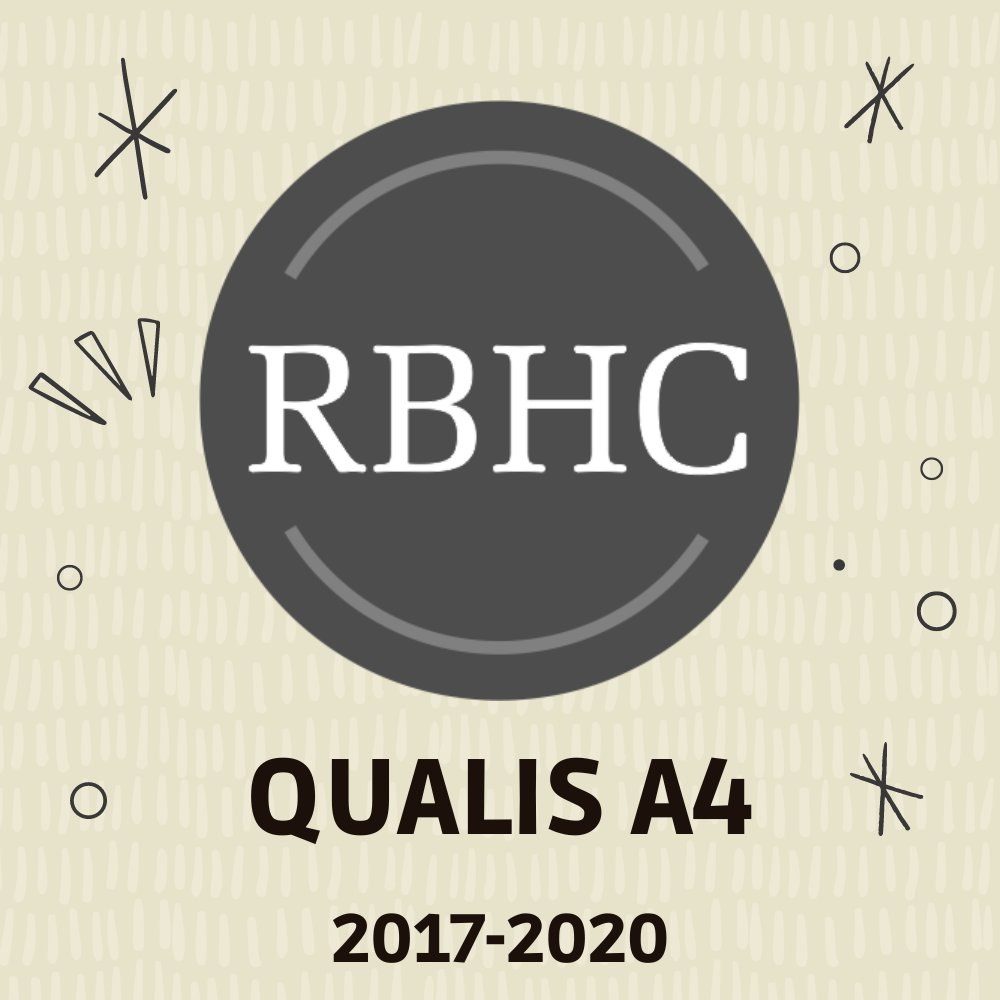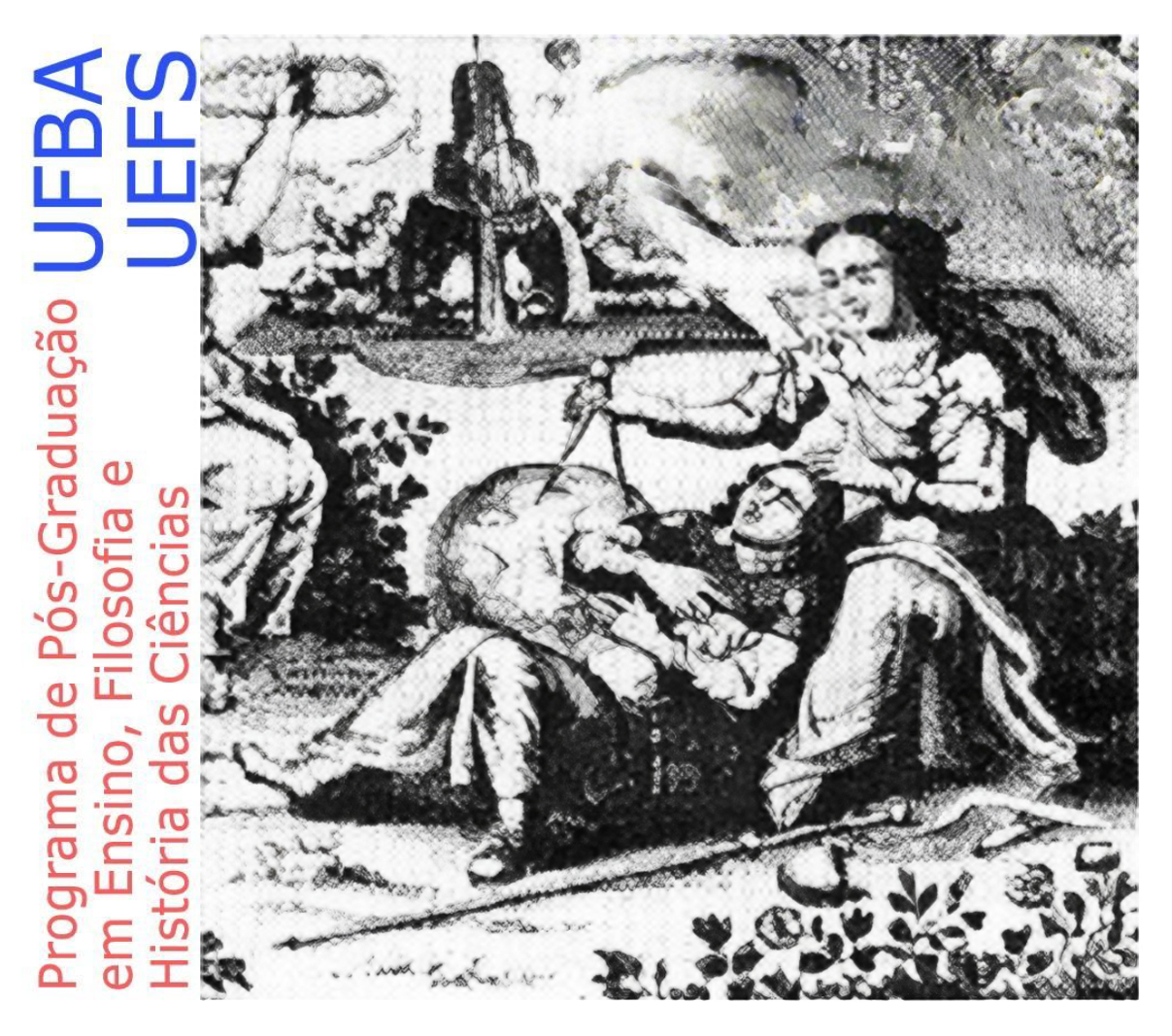From X-rays to the images of atoms in crystals
collective construction of the concept of chemical bonds
DOI:
https://doi.org/10.53727/rbhc.v16i2.878Keywords:
history of science , contextualized approach , science teachingAbstract
When discovered by Wilhelm Conrad Röntgen (1845-1923), X-rays caused fascination and great debate among people in the late 19th and early 20th centuries. Studying the properties of this new type of radiation led to an understanding of the structure of matter. In this work, we will try to highlight the importance of understanding this type of radiation and guide the reader toward a fundamental reflection: X-ray studies and their application in the identification of crystalline structures, which converged to the interpretation of chemical bonds. Although the justifications for the bonds are not addressed, it will be possible for the reader to identify the collective construction that will lead to the clarification of how atoms bond.
Downloads
References
ALLEN, H. S. Charles Glover Barkla: 1877-1944. Biographical Memoirs of Fellows of the Royal Society of London, v. 5, p. 341-366, 1947. DOI: https://doi.org/10.1098/rsbm.1947.0004
ANDRADE, E.N.C.; LONSDALE, K.Y. William Henry Bragg, 1862-1942. Biographical Memoirs of Fellows of the Royal Society of London, v. 4, p. 276-300, 1943. DOI: https://doi.org/10.1098/rsbm.1943.0003
ASSMUS, A. Early history of X-rays. SLAC Beam Line, v. 25, p. 10-24, 1995.
AUTHIER, A. Optical properties of X-rays: dynamical diffraction. Acta Crystallographica A, v. 68, p. 40-56, 2012. DOI: https://doi.org/10.1107/S0108767311040219
BARKLA, C.G. Polarised Röntgen radiation. Proccedings of the Royal Society of London, v. 74, p. 474-475, 1905. DOI: https://doi.org/10.1098/rspl.1904.0142
BARKLA, C.G. The Nnature of X-rays. Nature, v. 76, p. 661-662, 1907. DOI: https://doi.org/10.1038/076661c0
BARKLA, C.G. The nature of Röntgen rays. Nature, v. 77, p. 319-320, 1908a. DOI: https://doi.org/10.1038/077319b0
BARKLA, C.G. The nature of X-rays. Nature, v. 78, n. 2010, p. 7, 1908b. DOI: https://doi.org/10.1038/078007b0
BARKLA, C.G. The nature of X-rays. Nature, v. 78, p. 665, 1908c. DOI: https://doi.org/10.1038/078665a0
BASSALO, J.M.F. A crônica da física do estado sólido. I: do tubo de Geissler às válvulas à vácuo. Revista Brasileira de Ensino de Física, v. 15, n. 1-4, p. 127-138, 1993.
BRAGG, W.H. On the properties and natures of rarious electrics radiations. Philosophical Magazines and Journal of Sciences, v. 14, p. 429-449, 1907. DOI: https://doi.org/10.1080/14786440709463702
BRAGG, W.H. The nature of γ and X-rays. Nature, v. 77, p. 270-271, 1908a. DOI: https://doi.org/10.1038/077270a0
BRAGG, W.H. The nature of γ and X-rays. Nature, v. 77, p. 560, 1908b. DOI: https://doi.org/10.1038/077560a0
BRAGG, W.H. The nature of γ and X-rays. Nature, v. 78, n. 2021, p. 271, 1908c. DOI: https://doi.org/10.1038/078271a0
BRAGG, W.H. The nature of γ and X-rays. Nature, v. 78, n. 2022, p. 293-294, 1908d. DOI: https://doi.org/10.1038/078293d0
BRAGG, W.H. The nature of X-rays. Nature, 78, p. 665, 1908e. DOI: https://doi.org/10.1038/078665b0
BRAGG, W.L. The specular reflection of X-rays. Nature, v. 90, p. 410, 1912. DOI: https://doi.org/10.1038/090410b0
BRAGG, W.L. The diffraction of short electromagnetic waves. Proceedings of the Cambridge Philosophical Society, v. 17, p. 43-57, 1913.
BRAGG, W.L.; The history of X-ray analysis. The Physics Teacher, v. 3, n. 7, p. 295-300, 1965. DOI: https://doi.org/10.1119/1.2349162
BRAGG, W.L.; CAROE, G. M. Sir William Bragg, F.R.S. Notes and Records of the Royal Society, v. 17, p. 169-182, 1962. DOI: https://doi.org/10.1098/rsnr.1962.0016
CESTARI JR. D.H.; O conceito da descoberta científica: os raios de Roentgen como estudo de caso. Dissertação (Mestrado em História da Ciência) – Pontifícia Universidade Católica de São Paulo, São Paulo, 2015.
COFFEY, P. Cathedrals of science: The personalities and rivalries that made modern chemistry. New York: Oxford University Press, 2008. DOI: https://doi.org/10.1093/oso/9780195321340.001.0001
CURIE, M.S. Recherches sur les substances radioactives. Tese (Doutorado em Ciências Físicas) – Universidade de Paris, Paris, 1903.
DANG, H.; BRIGHT, L. K. Scientific conclusions need not be accurate, justified or believed by their authors. Synthese, v. 199, p. 8187-8203, 2021. DOI: https://doi.org/10.1007/s11229-021-03158-9
ECKERT, M.; Max von Laue and the discovery of X-ray diffraction in 1912. Annalen der Physik, v. 524, n. 5, p. A83-A85, 2012. DOI: https://doi.org/10.1002/andp.201200724
EINSTEIN, A. Sobre o desenvolvimento das nossas concepções sobre a natureza e a concepção da radiação. Revista Brasileira de Ensino de Física, v. 27, n. 1, p. 77-85, 2005. DOI: https://doi.org/10.1590/S1806-11172005000100008
EWALD, P.P. Max von Laue, 1879-1960. Biographical Memoirs of Fellows of the Royal Society of London, v. 6, p. 134-156, 1960. DOI: https://doi.org/10.1098/rsbm.1960.0028
FECHETE, I. William Lawrence Bragg: forerunner to modern crystallography. Comptes Rendus Chimie, v. 19, p. 267-273, 2016. DOI: https://doi.org/10.1016/j.crci.2016.02.007
FIOLHAIS, C. Ver as coisas por dentro. Gazeta da Física, v. 37, n. 1, p. 16, 2014.
FORMAN, P. The discovery of the diffraction of X- Ray by crystals: a critique of the myths. History of Exact Sciences, v. 6, p. 38-71, 1969. DOI: https://doi.org/10.1007/BF00327262
FRIEDRICH, W.; KNIPPING, P.; LAUE, M. Interferenzerscheinungen bei Röntgenstrahlen. Annalen der Physik, v. 346, n. 10, p. 971-988, 1913. DOI: https://doi.org/10.1002/andp.19133461004
GLAZER, M.; JENKIN, J.; William Lawrence Bragg: The dawn of x-rays crystalllography. London: Oxford Cryosystems, 2013. Disponível em: https://www.xtal.iqfr.csic.es/Cristalografia/archivos_10/Bragg-firstpaper-mini.pdf. Acesso em: 23 set. 2021.
GONÇALVES-MAIA, R. Pauling. São Paulo: Livraria da Física, 2016.
JAUNCEY, G.E.M.; The birth and early infancy of X-Rays. American Journal of Physics. v.13, n. 6, p. 362-379, 1945. DOI: https://doi.org/10.1119/1.1990748
JENKIN, J.; William Henry Bragg in Adelaide: beginning research at a colonial locality. Isis, v. 95, n. 1, p. 58-90, 2004. DOI: https://doi.org/10.1086/423511
LAUE, M.V. Concerning the detection of x-rays interferences. Nobel Lecture, p. 347-355, 1920.
LIMA, R.S.; AFONSO, J.C.; PIMENTEL, L.C.F.; Raios X: fascinação, medo e ciência. Química Nova, v. 32, n. 1, p. 263-270, 2009. DOI: https://doi.org/10.1590/S0100-40422009000100044
LIMA, R.S.; AFONSO, J.C.; PIMENTEL, L.C.F. Do despertar da radioatividade ao alvorecer do século XX. Química Nova na Escola, v. 33, n. 2, p. 93-99, 2011.
MARTINS, R.A. A descoberta dos raios X: o primeiro comunicado de Röntgen. Revista Brasileira de Ensino de Física, v. 20, n. 4, p. 373-391, 1998.
MARTINS, R.A.; ROSA, P.S. História da teoria quântica. São Paulo: Livraria da Física, 2014.
MARTIRADONNA, L. A photography of crystal order. Nature, v. 511, p. 7, 2014. DOI: https://doi.org/10.1038/nature13350
PACHECO, L.L.; FREITAS-REIS, I. A delicada tessitura da teoria do par compartilhado. Curitiba: Brazil Publishing, 2020. DOI: https://doi.org/10.31012/978-65-5861-092-2
PAULING, L.C. Roscoe Gilkei Dickinson, 1894-1945. Science, v. 102, n. 2644, p. 216, 1945. DOI: https://doi.org/10.1126/science.102.2644.216.a
PHILLIPS, D.C. William Lawrence Bragg, 31 March 1890-1 July 1971. Biographical Memoirs of Fellows of the Royal Society of London, v. 25, p. 74-143, 1979. DOI: https://doi.org/10.1098/rsbm.1979.0003
ROBOTTI, N.; The discovery of X-ray diffraction. Rendiconti Fisiche. Accademia dei Lincei, v. 24, p. 7-18, 2013. DOI: https://doi.org/10.1007/s12210-012-0205-1
ROSBAUD, P. Prof. Max von Laue, For. Mem. R.S. Nature, v. 187, p. 738-740, 1960. DOI: https://doi.org/10.1038/187738a0
SANTIN FILHO, O. Breve histórico dos 100 anos da descoberta dos raios X: 1895-1995. Química Nova, v. 18, n. 6, p. 574-583, 1995.
STEPHENSON, R.J. The scientific career of Charles Glover Barkla. American Journal of Physics, v. 35, p. 140-152, 1967. DOI: https://doi.org/10.1119/1.1973913
STUEWER, R.H. The elder Bragg: a daughter’s warm sketch. Physics Today, v. 31, n. 11, p. 67-68, 1978. DOI: https://doi.org/10.1063/1.2994817
THOMSON, J.J.; Conduction of electricity through gases. London: [s.n.], 1903. Disponível em: https://archive.org/details/conductionofele00thomuoft/page/n7/mode/2up. Acesso em: 18 abr. 2021.
WIEN, K. 100 years of ion beams: Willy Wien’s canal rays. Brazilian Journal of Physics, v. 29, n. 3, p. 401-414, 1999. DOI: https://doi.org/10.1590/S0103-97331999000300002
WYNNE, B.C.G. C.G. Barkla and the J Phenomenon: a case study in the treatment of deviance in physics. Social Studies of Science, v. 6, n. 3-4, p. 307-347, 1976. DOI: https://doi.org/10.1177/030631277600600303
Downloads
Published
Issue
Section
License
Copyright (c) 2023 leonardo pacheco, Ivoni Freitas-Reis

This work is licensed under a Creative Commons Attribution-NonCommercial-NoDerivatives 4.0 International License.



















